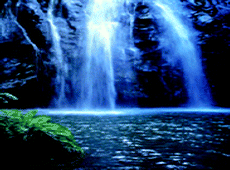Speciation of vanadium by anion-exchange chromatography with inductively coupled plasma mass spectrometry and confirmation of vanadium complex formation using electrospray mass spectrometry
Abstract
Inductively coupled plasma mass spectrometry (ICP-MS) and electrospray mass spectrometry (ESI-MS) were used as complementary techniques to identify vanadium–EDTA complex formation. ESI-MS enabled the identification of the 1:1 stoichiometry of [VO(EDTA)]2− and [VO2(EDTA)]3− and their MS spectra showed these vanadium complexes to be present in the solution. In addition, on-column complex formation of vanadium with ethylenediaminetetraacetic acid (EDTA), and the subsequent separation and detection of their complexes, was achieved by ion chromatography (IC) with ICP-MS. To avoid polyatomic ions such as 35Cl16O+ interfering in the detection of 51V, anion-exchange chromatography was used to separate chloride from vanadium–EDTA complexes with an eluent containing 30 mM NH4H2PO4 and 5 mM EDTA at pH 8.0 within 15 min. Linear plots were obtained in a concentration range of 2.0–500 μg L−1 with detection limits from 0.5–1.0 μg L−1. Finally, the proposed method was used for the determination of vanadium species in contaminated water.

- This article is part of the themed collection: Second Asia-Pacific Winter Conference on Plasma Spectrochemistry, Bangkok, Thailand

 Please wait while we load your content...
Please wait while we load your content...